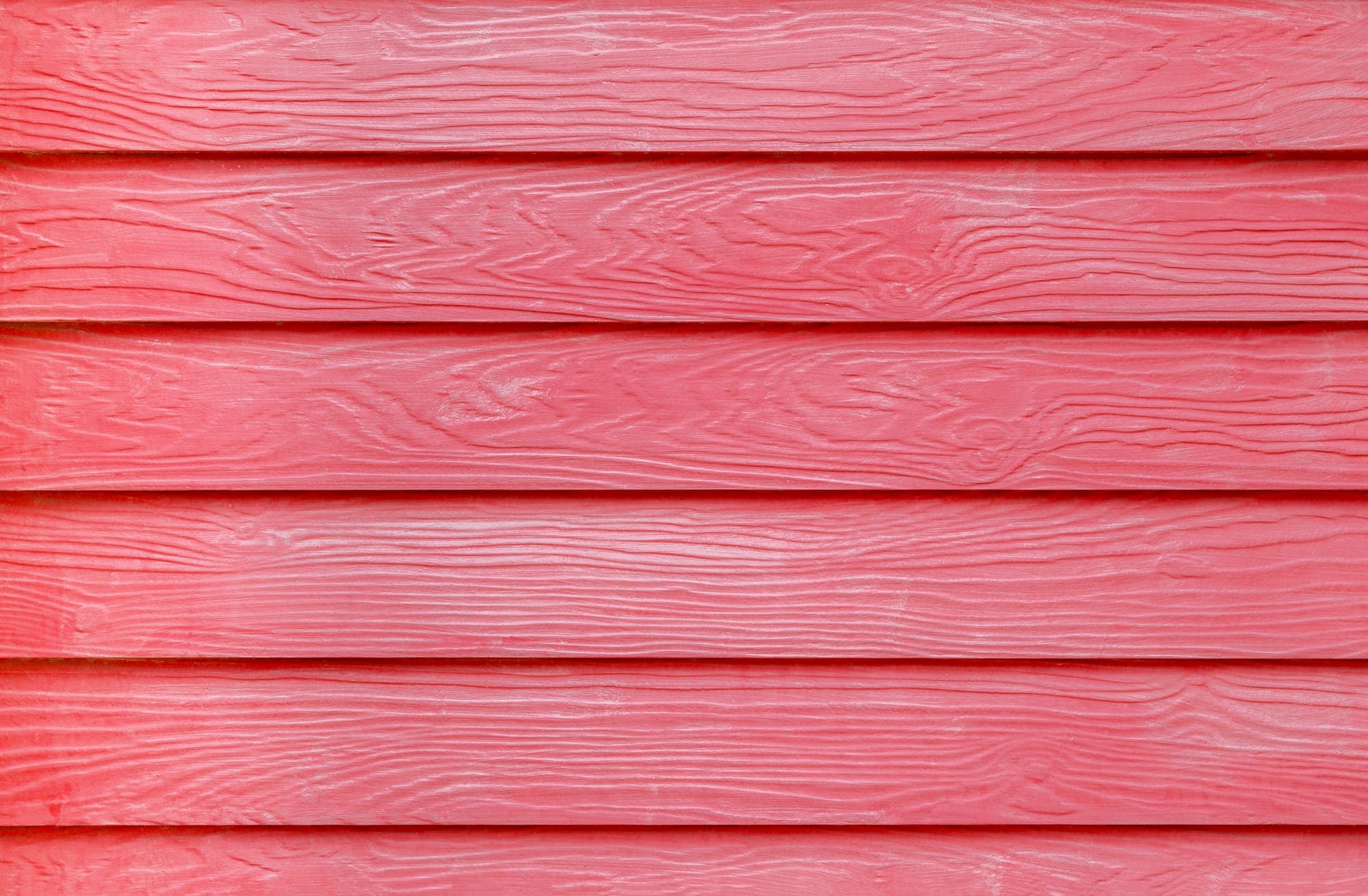Choosing the right siding for your home can be a daunting task. With so many materials in the market, it’s essential to thoroughly research beforehand. You want something that looks good, lasts long, and won’t break the bank.
In this guide, we’ll delve into everything you need to know about fiber cement siding: a popular home choice known for its durability and aesthetic appeal.
What is Fiber Cement Siding?
Fiber cement siding is a robust and resilient type of siding material composed of cement, sand, and cellulose fibers. Often chosen for its durability, fiber cement products offer homeowners a wide range of styles and colors that can enhance the curb appeal of any home.

James Hardie Industries first developed this siding in the late 19th century as a fire-resistant alternative to traditional wood siding. Over the years, the basic recipe has been refined and improved, with the former asbestos fibers being replaced by wood fibers for health and safety reasons.
Fiber Cement Siding Evolution
The evolution of fiber cement siding continues to this day, with advancements in technology further enhancing its features. Modern fiber cement siding is more resistant to warping, buckling, and shrinking, ensuring it retains its structural integrity and aesthetic appeal even after many years of exposure to different weather conditions.
These impressive enhancements make fiber cement siding even more popular among homeowners seeking a long-lasting and visually appealing home exterior.
Overall, fiber cement siding products, including lap and vertical siding, are popular home siding options among homeowners today due to their versatility, durability, and low maintenance.
The Advantages of Fiber Cement Siding
- Durability: One of the main selling points of fiber cement siding is its superior durability. This durable material can withstand harsh weather elements like freezing winters or heavy winds, ensuring your home is well-protected all year round.
- Noise reduction: The high-density composition of fiber cement siding also provides excellent noise reduction, making it a good choice for homes in high-traffic or noisy areas. This can significantly improve the comfort levels within your home, providing a quieter and more peaceful living environment.
- Fungal and water damage resistant: Additionally, unlike wood siding, fiber cement is resistant to common issues like fungal decay and water damage, making it a premium long-term investment for your property.
- Pests resistant: This material’s unique composition also makes it resistant to pest infestations, including termites and carpenter ants. These qualities add an extra level of protection for homes and further contribute to the material’s durability and longevity.
- Fire safe: Furthermore, fiber cement siding’s fire-resistant properties add another layer of safety to your home. As a non-combustible cladding, fiber cement won’t ignite when exposed to direct flame or extreme heat, providing peace of mind in case of fire incidents.
- Low maintenance: Moreover, this siding is relatively low maintenance compared to other siding materials. It doesn’t warp, crack, or rot, making it a wonderful choice for homeowners who want a good-looking house without constant upkeep.
- Various styles and colors: The variety of styles and colors available also appeals to many homeowners. Whether you’re looking for the natural texture of real wood or a wide range of solid colors, fiber cement is the perfect solution. Lucky for you, brands like James Hardie offer various styles, including:
• Traditional lap siding
• Shingle siding
• Vertical siding - Longevity: Fiber cement siding is known for its longevity, too, with many brands of fiber cement offering product warranties that last up to 15 years. In some cases, warranties can extend up to 50 years, showing manufacturers’ confidence in the longevity of their products. This can give homeowners peace of mind, knowing their investment in fiber cement siding is protected for many years.
- Environmentally friendly: Lastly, fiber cement siding is a more sustainable choice of exterior materials as it often incorporates recycled materials in its composition. The manufacturing process, too, consumes less energy than other siding materials and is more sustainable, thus reducing the negative impact on the environment. Eco-friendly and energy-efficient, fiber cement siding reduces your home’s carbon footprint and potentially helps you save on energy bills. All in all, it’s an excellent choice for homeowners in need of the ideal siding.
The Potential Drawbacks or Limitations of Fiber Cement Siding
Though fiber cement siding has countless advantages, it’s also essential to consider potential drawbacks.
- Costs: To start, one of the main limitations is its cost, which is generally higher than vinyl or wood siding in terms of material prices and professional installation. However, it’s vital to note that despite the higher initial cost, the long lifespan and minimal maintenance requirements of fiber cement siding often result in significant cost savings over time.This makes fiber cement siding a more cost-effective solution in the long term, especially when compared to other siding materials that require frequent replacement and maintenance. This is due to the siding’s weight and complexity of installation, which usually requires the skills and equipment of professional fiber cement siding contractors.
- Labor-intensive and time-consuming: Admittedly, installing and constructing fiber cement siding can be labor-intensive and time-consuming. This is because each piece of siding needs to be cut to the correct size, which can create silica dust: a recognized human carcinogen.Therefore, special precautions are necessary during installation to ensure safety. But don’t be alarmed! As complex as the installation and construction process may be, the results are more than worth it in the long run.
- It needs frequent repainting: Fiber cement siding also requires periodic repainting. Though many fiber cement products come pre-painted, the paint job can fade over time, requiring a fresh coat of water-based exterior house paint every 10 to 15 years.While repainting may seem like a chore, it provides an opportunity to refresh the home’s appearance. More specifically, it allows homeowners to change their home’s color scheme over time, accommodating changing tastes and styles.
- More care in humid weather: Lastly, though it is generally low maintenance, this siding may require additional care in very humid climates.Overall, as with all things in the world, fiber cement siding comes with its fair share of cons. However, it is undoubtedly an excellent choice for homeowners seeking a durable, low-maintenance siding material to enhance their home’s curb appeal.
Fiber Cement Siding vs. Other Siding Options
When choosing a suitable siding material for your home, it’s crucial to consider various factors, including durability, maintenance, cost, and aesthetics. In this section, we’ll compare fiber cement siding with other popular siding options. So, let’s get started!
Fiber Cement Siding vs. Vinyl Siding
In terms of appearance and texture, fiber cement siding offers more versatility. Homeowners can customize their home’s look with various colors and styles, including lap siding, vertical siding, and fiber-cement shingles.

This siding can mimic the look of natural woods or even wood grain textures, providing an authentic and premium product look. On the other hand, vinyl siding, while available in various colors, lacks the depth and texture of fiber cement.
Additionally, fiber cement siding does not fade or yellow with time, unlike vinyl siding. This ensures the colors stay vibrant and fresh for extended periods, maintaining your home’s aesthetic appeal.
Durability is another critical difference between the two. Fiber cement is more robust than vinyl, offering better resistance against harsh weather conditions, water damage, and fungal decay. While vinyl is relatively durable, it can become brittle, especially in freezing temperatures.
Maintenance requirements also vary. Vinyl siding is virtually maintenance-free, only needing occasional cleaning with a garden hose. On the other hand, fiber cement siding requires repainting every 10-15 years, but given its durability and longevity, many homeowners find this an acceptable trade-off.
Lastly, fiber cement siding is more capable of withstanding the impact of hail or debris, making it a superior choice in areas prone to severe weather conditions.
Fiber Cement Siding vs. Wood Siding
Wood siding, notably cedar, has timeless appeal but requires high maintenance. In contrast, fiber cement siding mimics the look of wood but doesn’t demand constant upkeep.

This makes it an excellent choice for those who love the classic look of wood but prefer a low-maintenance siding option that isn’t susceptible to pests and rot.
In terms of durability, fiber cement siding outperforms wood siding since it is not prone to splitting or cracking and can withstand extreme weather conditions. Wood siding, while durable, is more susceptible to damage, which can eventually lead to rot and decay.
Other Types of Sidings
Other siding materials include aluminum and stucco. To begin with, aluminum siding is a low-maintenance pick that can easily dent or fade. Then there’s stucco siding: a popular option in regions with a Mediterranean climate that requires regular painting to prevent cracking.
Unlike stucco, fiber cement siding is less susceptible to cracking under extreme temperature changes. Its dimensional stability maintains its shape and size, even when exposed to intense cold or heat.
In various scenarios, fiber cement siding can be a preferable choice. Thanks to its versatility, durability, and aesthetic appeal, it is a standout option for all homeowners.
Feeling overwhelmed by the number of siding options? We understand. At eXp Realty, we’ve got countless real estate experts to help guide your decisions and offer invaluable insight into your property needs. Feel free to contact an experienced agent for personalized advice and support regarding house sidings.
Assessing Suitability for Your Home
Before choosing fiber cement siding for your home, it’s essential to assess various factors to determine its suitability.
Firstly, consider your local climate. Fiber cement siding performs exceptionally well in various locations due to its resistance to common weather-induced damages, including warping, cracking, and rotting. However, areas prone to extreme humidity may need more frequent maintenance to prevent moisture absorption and damage.
Fiber cement siding’s UV resistance is another factor that increases its suitability for different climates. This attribute ensures that the siding maintains its color even with prolonged exposure to the sun. So, chances are, it’ll be an excellent pick for your house!
Next, architectural compatibility is another factor worth examining. Fiber cement siding offers various textures and colors, making it versatile for different architectural styles. Whether you have a modern home or a house in a historic district, you can find fiber cement products that enhance your home’s curb appeal perfectly.
Local regulations and restrictions also play a role in your choice of siding. Some neighborhoods or homeowner associations may have specific exterior material and color rules, making it vital to check these guidelines before committing to fiber cement siding.
Lastly, consider your personal lifestyle and maintenance preferences. If you’re looking for a low-maintenance option that offers durability, longevity, and unparalleled style, fiber cement siding is your most viable option.
The Costs of Fiber Cement Siding
Fiber cement siding is often viewed as a cost-effective alternative to traditional wood or vinyl siding, particularly considering its lifespan and minimal maintenance needs. However, the upfront costs can be higher.
Material costs for fiber cement siding can range from $6 to $13 per square foot. This can be significantly more than vinyl siding, typically costing $2 to $7 per square foot. However, the superior durability and lifespan of fiber cement siding often make it a worthwhile investment for many homeowners.
The labor costs of installing fiber cement siding can also be higher than other siding options due to its weight and the complexity of installation. Specifically, professional installation can add $3 to $7 per square foot.
But here’s the thing: properly installed fiber cement siding can provide better insulation and energy efficiency, thus reducing your home’s heating and cooling costs and minimizing the risk of issues down the line.
Maintenance and repair costs for fiber cement siding are generally low, especially compared to wood siding, which requires regular treatments to prevent rot, insect damage, and weathering. However, fiber cement siding does need to be repainted every 10 to 15 years, which can add to the overall cost over time.
Another consideration is the potential impact of fiber cement siding on your home’s resale value. High-quality siding can enhance your home’s curb appeal, potentially increasing its market value. According to the National Association of Realtors, homeowners can recoup around 77% of the cost of new siding when selling their homes.
Overall, it’s crucial to remember that while fiber cement siding can have higher upfront costs, its durability, longevity, and potential to boost home value often make it a worthwhile investment in the long run. For more personalized advice on the costs and benefits of fiber cement siding, you can always speak to a professional contractor.
Key Takeaways
In summary, fiber cement siding is an innovative building material known for its durability, versatility, and low maintenance requirements. It offers the beauty and texture of natural woods and is available in a wide range of colors to suit any architectural style.
However, this type of siding comes with potential drawbacks, including high initial costs and the complexity of installation. It’s also worth noting that while it’s generally low maintenance, it may require more frequent care in very humid climates.
Needless to say, choosing the right siding for your home is a decision that should be based on various factors, including your local climate, architectural style, local regulations, and personal maintenance preferences. Contact a local eXp Realty agent for valuable insight tailored to your needs.
Ready to find beautiful properties equipped with your choice of siding? You’ve come to the right place! Browse eXp Realty’s vast range of properties today, and sign up to get instant alerts for new listings on the market.
FAQs: Fiber Cement Siding
Still have questions about fiber cement siding? Check out the frequently asked questions below.
Is fiber cement siding worth it?
Fiber cement siding is worth considering due to its durability, resistance to weather damage, fire-resistant properties, and low maintenance requirements. It can also enhance your home’s curb appeal, potentially increasing its value.
Is fiber cement siding expensive?
Fiber cement siding costs can range between $6 to $13 per square foot for materials and $3 to $7 per square foot for installation. Although this may seem expensive compared to other siding options, the long lifespan and low maintenance requirements can make it a cost-effective choice in the long term.
What are the pros and cons of fiber cement siding?
The pros of fiber cement siding include its durability, fire resistance, low maintenance, and wide range of styles. The cons are its relatively high initial cost, complexity of installation, and potential for increased care in highly humid climates.
What is the lifespan of fiber cement siding?
Fiber cement siding can last up to 50 years with proper installation and care.
How often does fiber cement siding need to be painted?
Fiber cement siding must be painted every 10-15 years, depending on the climate and exposure to the elements.
Is fiber cement siding high maintenance?
Compared to other siding options, fiber cement siding is generally low maintenance. However, it may require more frequent maintenance to prevent moisture damage in very humid climates.
Does fiber cement siding increase home value?
Due to its durability and aesthetic appeal, fiber cement siding can potentially increase a home’s value. After all, the quality speaks for itself.
Can fiber cement siding get wet?
Fiber cement siding is resistant to various forms of damage. Just make sure it is properly sealed or painted for optimal results.





